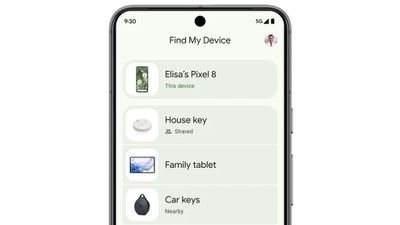[ad_1]
Google today introduced the Find My Device network for Android-based products, mirroring the functionality of Apple’s Find My network that’s designed to locate Apple devices.

Like Apple Find My, the Android Find My Device network is able to use the millions of Android devices (running Android 9 or later) out in the wild to track down lost, stolen, and missing Android products. A lost Android smartphone is able to ping nearby Android devices using Bluetooth, relaying location information back to the owner.
Because the network uses Bluetooth, it works even when Android devices are offline and do not have a cellular or Wi-Fi connection. Some devices, such as the Pixel 8 and Pixel 8 Pro, will be locatable even when powered off or when the battery is dead. Find My offers the same feature set for iPhones.
Starting in May, the Find My Device network for Android smartphones will also work with Bluetooth trackers from companies like Chipolo and Pebblebee, allowing Android users to attach trackers to items to locate them with the Android network. While Google isn’t designing its own trackers, these third-party trackers will work in the same way that AirTags work.
To keep iPhone users from being tracked without their knowledge using this new network, Google worked with Apple to create an industry specification that lets both iPhone and Android users get alerts about nearby unknown item trackers regardless of the brand of the tracking device. Google waited until Apple implemented support for third-party tracker alerts to launch its network, based on code found in iOS 17.5.
iOS 17.5 appears to expand the “Found Moving With You” AirTag alerts to third-party item trackers, allowing the iPhone to recognize Android-based item trackers and those from other companies. “You can disable this item and stop it from sharing its location with the owner. To do this, follow the instructions provided on a website by the manufacturer of this item,” reads some of the iOS 17.5 code.
Google was able to learn from the criticism that Apple faced after launching AirTags. There have been numerous news stories and reports of criminals using AirTags for stalking, car thefts, and more, leading Apple to make multiple changes to unwanted tracker alerts. Apple upped the frequency of notifications and also designed a Tracker Detect app for Android devices, but Apple’s work with Google ensures a more permanent solution that keeps Android and iPhone users safe as another major tracking network launches.
[ad_2]
Source Article Link

